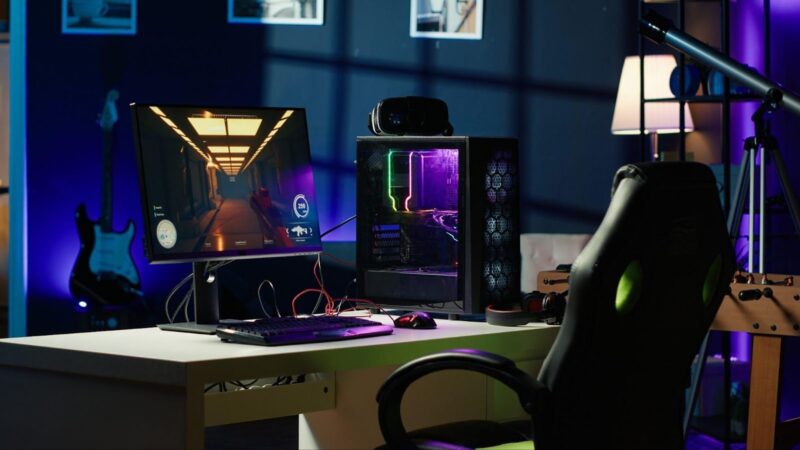
Online casinos might look sleek on the surface, but behind the flashing lights and seamless gameplay lies a complex tech ecosystem built for speed, fairness, and security. From the developers who design the games to the backend systems that manage every spin and payout, it’s a world few players ever see. In collaboration with tribuna.com, we take a closer look at the architecture powering your favorite platforms—revealing how the industry combines cutting-edge software, real-time data handling, and strict oversight to deliver a polished, trustworthy experience for millions of users.
Casino software providers 101: Meet the brains behind the games
Before a single chip is wagered, every modern casino is powered by specialized software companies, known as game studios or casino software providers.
These providers create the actual games—slots, blackjack, roulette, and even live dealer experiences. They’re responsible for the game’s rules, graphics, payouts, and, crucially, the core algorithms that ensure randomness and fairness. Industry giants include names like NetEnt, Evolution, Microgaming, and Pragmatic Play. These brands supply game “libraries” that casinos license and integrate.
Notably, iGaming studios never see your bets or handle your money. Their job is to build certified, tamper-proof code that’s ready for plug-and-play installation on any regulated casino site. Each game provider is required to undergo scrutiny from third-party auditors before going live, ensuring no tricks, manipulation, or “rigged” outcomes can sneak through. The separation between provider and casino ensures one side can’t secretly skew the odds in their favor.
For players, this means every spin or deal—regardless of the casino’s own policies or branding—is ultimately governed by studio-designed code, independently vetted and operating under strict licensing.
The casino’s online architecture
It’s not all just “HTML and games”—today’s online casinos are marvels of modular, cloud-powered design. Let’s decode the core architecture:
| Layer | What it does | Player impact |
| Frontend | The visible site and user interface—lobby menus, games list, cashier, account dashboard. | Determines user experience, speed, and mobile compatibility. |
| Backend | The powerhouse behind the curtain—game logic, player accounts, payment systems, security checks, reporting tools. | Ensures fairness, transaction security, and scalable operation. |
| Game Servers | Handle real-time games, manage game states, randomness, and communication with the backend. | Delivers game speed and reliability. |
Modern casinos use a “building block” (modular) design, so player management, payments, bonuses, and analytics each live in their own services. This boosts reliability—if a bonus system fails, your ability to cash out or play isn’t affected.
Cloud providers, Docker containers, and orchestration tools like Kubernetes allow casinos to handle thousands of users and adjust resources in real time, avoiding slowdowns or server crashes during big events.
In a nutshell, every bet, spin, or deposit passes through multiple highly specialized layers, each optimized for maximum uptime and seamless play.
API vs native: how games talk to the casino
Behind every iconic slot and table game is a clever framework determining exactly how the game “plugs in” to the broader casino platform.
Most online casinos integrate games using APIs (Application Programming Interfaces), the industry standard. Game studios provide secure APIs that allow the casino backend to request games, read outcomes, log payouts, and manage player sessions. This setup offers major advantages: new games can be added quickly by plugging in a new API endpoint, all games can be managed and monitored from a unified dashboard, and updates or fixes from the provider are applied instantly across all partner casinos.
A less common approach is native integration, where game code is installed directly onto the casino’s own servers rather than being loaded from the provider. While this can offer greater control, it comes with significant downsides—updates are slower, security risks increase due to local code storage, and the casino may have to handle bugs and maintenance without the provider’s direct support.
| Integration Style | Flexibility | Speed of updates | Security | Developer workload |
| API Integration | High | Immediate | High | Lower (managed by provider) |
| Native Integration | Limited | Slow/Manual | Variable | Higher (casino-managed) |
Most reputable casinos now stick to API-driven integration for compliance, uptime, and the ability to offer the latest games as soon as they’re released.
How data is stored & encrypted: Keeping your information (and money) safe
Every online casino accumulates mountains of sensitive data: player details, bet histories, payment info, and more. The architecture behind all this prioritizes security at every step.
Online casinos rely on robust data storage systems to ensure security, speed, and compliance. Common databases like PostgreSQL, MySQL, and MongoDB handle core data functions, while Redis or Memcached provide high-speed caching for real-time performance. Many leading platforms host these databases on geographically distributed cloud infrastructure, offering built-in redundancy and disaster recovery in case of failure.
To protect user information, encryption is applied at every stage. SSL/TLS secures all data in transit—visible as the padlock icon in your browser—while sensitive information stored at rest, such as passwords or transaction histories, is encrypted using standards like AES-256. On the compliance front, top casinos adhere to strict regulations including PCI-DSS for payments and GDPR for user privacy, often undergoing regular cybersecurity audits.
User management is equally sophisticated. Features like identity verification (KYC), withdrawal locks, and responsible gambling tools are supported by secure, segmented database structures, with continuous monitoring to detect anomalies or unauthorized access.
A combination of strong technical safeguards, regulatory frameworks, and ongoing testing keeps your real-money gaming as safe as modern internet standards allow.
Real-time game monitoring systems: How casinos and providers police game integrity
What ensures that every spin, shuffle, and deal stays on the straight and narrow—both for fairness and anti-fraud?
- Continuous logging: Every event—bet, spin, win, login, or error—is time-stamped and logged across independently secured servers. This “digital paper trail” enables fast audit and dispute resolution.
- Live monitoring dashboards: Casinos and providers use dashboards to track the health of every game server in real time. This includes player loads, suspicious betting patterns, error rates, and payout distribution. Automated systems can freeze games, flag operators, or shut down sessions if unusual activity is detected.
- Fairness verification: All RNG outcomes, wins, and losses are continuously checked against mathematical expectations, with third-party observers like eCOGRA, iTechLabs, or GLI able to perform spot checks and audits.
- Event streaming and alerting: Technologies like Apache Kafka or RabbitMQ stream game data to anti-fraud tools and customer service teams, so any outlier (like a jackpot anomaly or possible hack) is investigated instantly.
- Player-facing tools: Some casinos let you review your own play log, verifying that outcomes match published odds—a key pillar of transparency, especially in regulated markets.
In summary, the system powering your favorite casino is more than just flashy graphics and clever apps. It’s a multi-layered marvel of redundant architecture, modular design, encrypted data vaults, secure APIs, and ever-watchful monitoring. The nerdy brilliance is hidden beneath the surface, but it’s what actually guarantees fair play, secure funds, and pure unpredictability—spin after spin, hand after hand.













